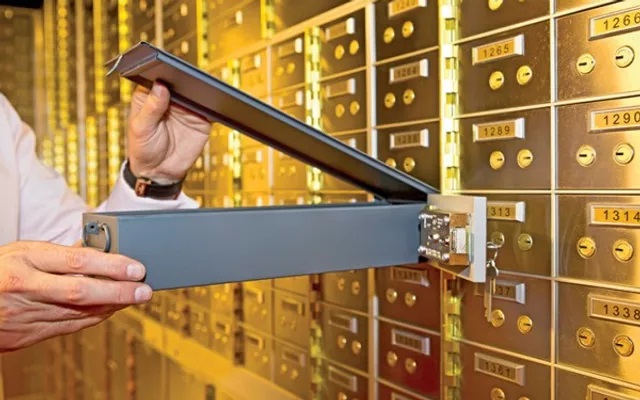If you have a savings bank account, you will know about the bank or safe deposit locker. This chargeable facility allows customers to safely store their valuables such as jewellery, or important documents such as insurance, loan or property.
However, some rules are associated with the locker facility, which must be followed. So if you are thinking of getting a bank locker, then you should know these things in advance.
Get locker
You can take a locker in any bank, but if the bank in which you have an account, you can get a locker in that bank quickly. If this is not the case, you may be placed on a waiting list for a locker, which may range from 6 months to a year. You are notified when a locker becomes available. The ideal situation here would be to apply for a locker with your bank and preferably in a branch which is nearer to your home.
Application process
The process of taking a locker begins with the application which you have to complete and submit to the bank. You will be required to sign a ‘Memorandum of Letting’, which is an agreement containing the terms and conditions governing the use of the locker. GET AND KEEP A COPY OF THIS AGREEMENT SAFE.
In case of joint locker, the agreement has to be signed by all the applicants in the presence of the bank official at the branch where the locker is being taken. They will also have to submit their KYC documents and photographs as requested by the bank. Also, in some banks, there is also a limit of holders for joint locker.
The bank where you apply for a locker may also ask you to open a savings/current account. You will also have to pay the locker rent for one year in advance.
Locker charges
As per the latest RBI regulations, banks can ask the person applying for the locker to open a Fixed Deposit (FD) in the branch where the locker is being taken. The FD amount should be sufficient to cover the locker rent for 3 years and service charges if the locker needs to be broken.
Locker Operation Guidelines
Banks generally set rules for locker visits, especially those visits which are free, and the minimum period for which the locker must be kept. For example State Bank of India, Bank of Baroda and Canara Bank allow 12 free visits every year. On the other hand, Axis Bank and ICICI Bank allow 3 free locker visits to the customer every month.
Inquire with your bank about the minimum number of locker visits required to keep your locker active. If the locker is not operative for a specified period, the bank may seal it and cancel your allotment, even if you have paid the rent regularly.
Fix joint holding or nomination
In case of bank lockers, banks allow customers to fix nomination or take the locker under joint holding. In the event of an unfortunate event, the contents of your locker are handed over to your nominee or joint holder. Banks also allow their customers to operate the lockers in “Eider or Server” mode or as joint holders.
Locker rent
Bank locker rents largely depend on the size of the locker (small, medium or large) and its location. Regarding the location, the fare may vary in metro, urban or semi-urban and rural areas. Rent is charged annually and must be paid in advance. In some cases, banks may ask you to pay 2-3 years’ rent in advance. Depending on the size, the charges range from Rs.1500/- to Rs.20,000/-.
Notably, locker rent for private or foreign banks is higher as compared to public sector banks. Apart from rent, banks also levy other charges like one time locker registration fee, rent overdue charge, loss of locker key, charge for visits in excess of the prescribed number of visits etc.
Operating a Locker – How to do it
Operating a bank locker is very simple. You have to go to the bank and inform the clerk that you wish to operate the locker, following which, you will be asked to provide your details and you will have to provide the locker details in the bank’s records. In case of joint locker, both the holders may be asked to produce separate identity proofs.
When talking about a bank locker, it has two key slots, and both these slots are operated with different keys. Out of these two keys, one key is given to the locker holder and the other key remains with the bank. When the locker room is opened, the clerk half-opens our locker with his key and walks out of the room for privacy. Then we use our key to open the second lock, put or take out whatever is to be kept or removed, and lock it again with our key before going out. After this the clerk comes back and closes the other lock so that the locker is completely locked.
If you are planning to go for your bank locker visit soon, here are some tips. Try to reach the bank as soon as the bank opens so that you do not have to wait in line. Every time you go to the bank for your bank locker, make a list of the things kept in it before closing it. Also, whenever you go to your locker in the bank, you must carry pen, key of your locker and identity card etc. with you.















